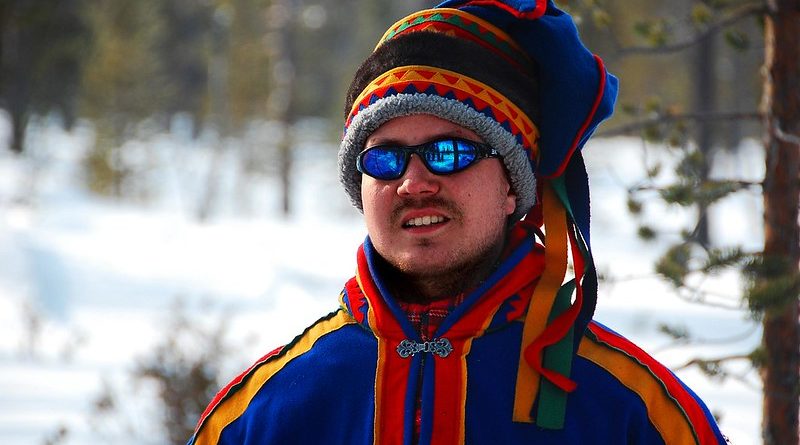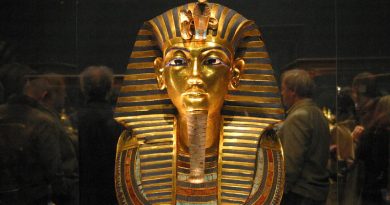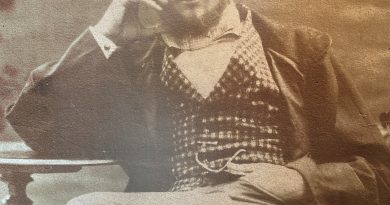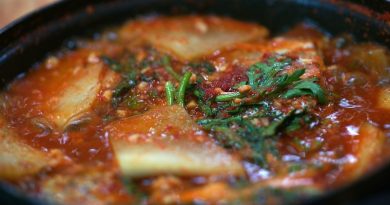The Sami People of Lapland
Culture Facts
Where: Lapland or Samiland, northern Norway in the Arctic Circle
Who: Ancient Germanic culture and forebearers of the mighty vikings
Culture: Colourful folk dress & tradition nomadic lifestyle based on reindeer hunting
Explore: Visit the Sami museum in Kautokeino or privately visit a tourist Sami Community
History
One of the oldest living cultures in Norway, and possibly the world is that of the Sami people, who have been surviving in the barren landscapes of Sami Land (the area commonly known asLapland) for thousands of years, some findings suggest as long as 4,000 years. They mixed with Germanic tribes years ago, and produced the Vikings, who raped and pillaged their way across most of Europe. However, their surviving ancestors are a much more peaceful race, and pride themselves on the fact they have never been involved in a war. Over half of their current population live in the part of Sami Land that falls into Norway, the region calledFinnmarksvidda, though the area covers the northern extremes of Sweden, Finland, and as far east as Russia.
The name ‘Lapp’ means piece of cloth or patch, and is considered an outdated, and often derogative term. The name ‘Sami’ derives from their own name from themselves, is therefore a more acceptable term, and is the race’s preferred name.
Lifestyle
They traditionally survived by hunting and fishing, and in more recent years, by herding reindeer, which have also become their staple food. Reindeer meat is most commonly eaten fried, or on special occasions, stewed, however, due to their limited preservation, it is often dried for later consumption. They are never wasteful, and every part of the reindeer is put to use – the skin for shoes and clothing, the bones for handicrafts, and other parts are sold to China for their alternative medicinal properties. The Sami are a nomadic people, and in the summer months many still live in their tepee like homes, known as Katas, which can easily be taken down and reconstructed in a different place as the people move across the country with their animals.
Festivities
Festivals play a significant part of the Sami calendar, particularly at Easter, which is predominantly a celebration of the end of the dark winter months, and the beginning of a pilgrimage north for new pasture. This is also the time of year when other celebrations take place, and is particularly popular for weddings. The festival is marked with an annual Reindeer Racing Championship, held at Kautokeino. A past-time popular especially during festivals, and unique to the Sami, is the Joiking. This is the practice of singing yodel-like song-poems, originally used to communicate with the gods, and is supposed to describe a mood, person, place or event, forming a kind of lyrical story-telling.
Contemporary Sami culture
The Sami retain their separate status through the use of their own language (notable for its 100 different words for snow!), and many still wear the traditional, embroidered red and blue felt clothing – augmented for women with pearl and ribbon crowns for celebrations, and these, along with their music and handicrafts, mark them out as different from the many other ethnic groups in Scandinavia. On a more national scale, even have their own radio stations, flag, national anthem, and representatives in Norwegian parliament.
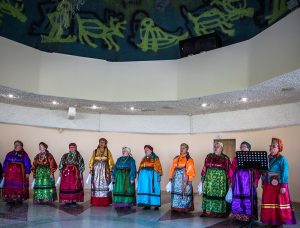
Traditional dress of the Sami People
Their isolation and exclusive culture have mean that they have been historically and politically marginalised, and there has been a long-standing mutual animosity between the Norwegians and their Northern neighbours. These problems are lessening now, as links with these ancient people become more popular, almost a source of national pride, and certainly a tourist attraction. The Sami are, however, inevitably becoming more westernised, as they incorporate more technology into their lifestyles – such as snowmobiles for reindeer herding – and more begin to live in modern style homes. As a people they believe in changing and adapting their ways to fit the times.
Visiting the Sami
The Sami are a generally friendly people, and will happily invite visitors to witness their way of life. Although many people argue that tourism is allowing their traditional way of life to be sustained, by meaning that they do not need to abandon their traditional employment in order to earn enough to support their families, increased tourism and western influence cannot help but influence the Sami way of life, and not necessarily for the better.
Kautokeino in the cultural capital of the Sami people, right in the heart of Sami Norway, and one of the oldest settlements in Norway, dating back about 5000 years. Here you can visit the open air museum, depicting details of traditional Sami life, which also has an indoor section displaying traditional Sami handicrafts.
main image: Nordic Sami (Saami) people in Sapmi (Lapland) in front of two Lavvo Tents. The Sami people in the photo are Nomads. Norway Sweden.
MORE INFORMATION
The Sami of Norway
Odin – Detailed information about the Sami people, their history and way of life
The Sámi of Far Northern Europe
Arctic Circle – Extensive information about almost every aspect of the Sami imaginable.
By Guilia Vincenzi

